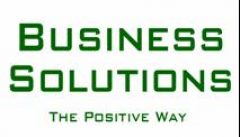The question for you is not “if” your profits are being stolen but the only question is “Who is stealing how much?”
The estimate of embezzlement for the US alone in 2018 was almost $50 billion. This included robbery, cargo theft, larceny and burglary. The top incidents were organized retail crime, employee theft, fraud, burglary, counterfeiting and robbery. Note that employee theft far exceeded the losses due to robbery. In a 2017 survey by Hiscox* the median dollar amount for small or mid-sized businesses (under 500 employees) was $289,864. The median loss for companies with over 500 employees was estimated to be $452,025.
Hiscok provides the following common characteristics to look out for:
- Intelligent and curious – eager to know how everything in the office works
- Extravagant – often flaunt their wealth
- Egotistical risk-taker – rule breaker on and off the job
- Diligent and ambitious – beware of the person who does not take vacations
- Disgruntled – feel treated unfairly and may want to even the score
I’ll add one more from experience: They are the manager, accountant, controller, bookkeeper or clerk who just can’t get the reports straight and on time. They love disorder in which to hide their own dealings.
According to the National Retail Federation retail goods shrinkage of $48.9 billion is due to four major sources: employee theft (30%), shoplifting (36.5%), administrative error (21.3%), vendor fraud/error (5.4%) and unknown loss (6.8%).**
None of these figures include the billions of dollars lost to employee time that is deliberately wasted, time card falsification, inflated expense accounts, office supplies that end up at home and countless other ways in which employees waste company time and money. Excuse me while I check my FB account…
A number of years ago a senior sales executive (over 25 years with the company) warned me not to make him work from home because he assured me that he would extract the “cost” from the company in any number of ways that the company could never detect. I was no longer with that company when that move was finally made to save money so I don’t know how much, if any, this long-term employee extracted in “payment.” I often wondered which of his supervisors allowed him to harbor such a terrible attitude.
Just within this year two priests in my city have been indicted for embezzling hundreds of thousands of dollars from their churches. Prevention is a wise thing to do and don’t forget to help keep your employees honest with good systems and audits while you are locking the front door. Embezzlement and shrinkage is just two aspects of the element of Loss which is part of the Profit Equation.
How much of your hard-earned profits can you afford to allow the thieves within and outside your business to take?
Contact us if you would like to learn how to reduce your Losses now.
References:
